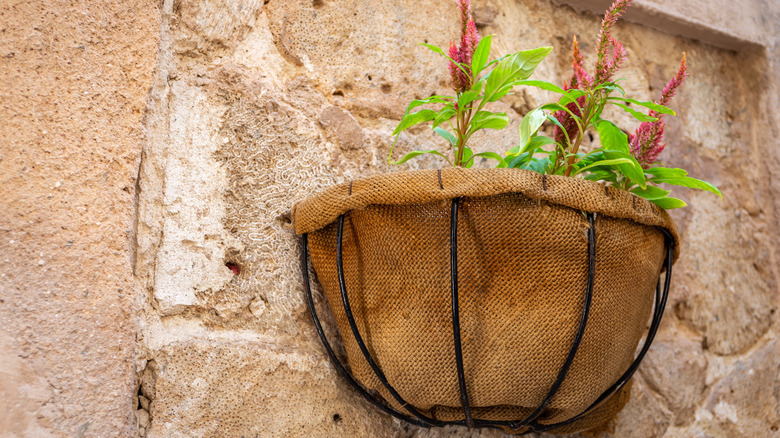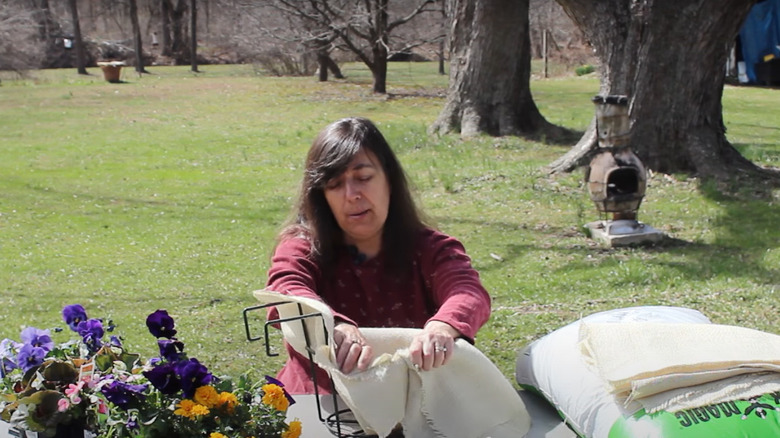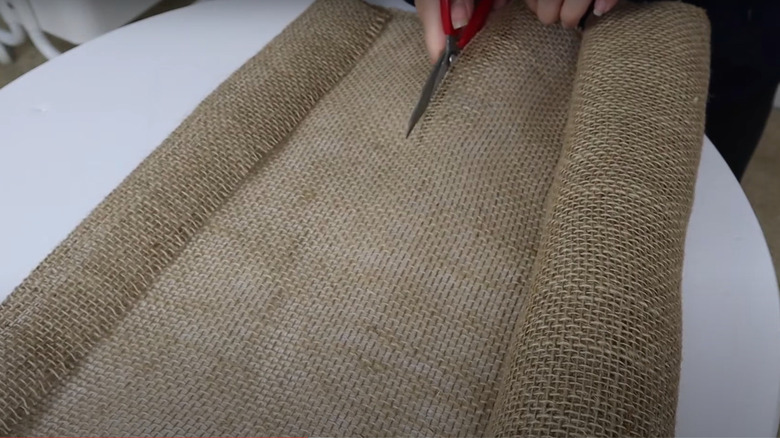Why You Should Line Your Flower Pots With Burlap Before Planting
Planting flowers in pots is a terrific way to curate home spaces to reflect personal aesthetics. From adorning patios and backyards to gracing living rooms, there are myriad ways you can move these beauties around in sync with your ever-changing tastes and preferences. However, this convenience has a price; balancing watering with drainage. While all plants require a certain amount of water to flourish, they generally despise drenched feet with aquatic and bog plants being an exception. Providing drainage holes in the container risks leeching out of the potting mix which harms the plant's growth in the long run. Not to mention that cleaning up soil messes doesn't exactly enhance the gardening experience. To resolve your dilemma, line the flower pots with burlap.
Mostly made of jute, also available in hemp and flax variants, burlap is a breathable fabric that is porous enough to allow the extra water to drain out while still keeping the soil adequately moist, making it a win-win item for potted flora. To reap the benefits, avoid using synthetic or treated burlap fabrics. They aren't given to decomposition and may instead be harmful by causing roots to circle if the pots aren't changed over extended periods.
Benefits of lining pots with burlap pre-planting
It's not unusual to find decorative containers that are just right to accentuate your flower's natural beauty but, unfortunately, lack drainage holes. Double-potting with plastic (with drilled holes) is generally a way out. But a more durable, natural option is to line its length and bottom with burlap. Burlap doubles up as a container. This is especially handy with wooden pots because they're prone to decay over time due to frequent water exposure. Similarly, metal planters rust on recurrent water contact and can do with an additional layer to retain their visual appeal. Many venture that adding burlap is a brilliant way to add a rustic look to your planter.
Aesthetics aside, burlap's utility lies in its ability to keep plant roots happy. Standing water causes root rot, a vicious disease that shortens the flora's life prematurely. The hessian fabric tackles the issue by providing the excess water space to move out while still leaving the plant hydrated. The soil doesn't spill out, either. Moreover, changing containers becomes a breeze during renovation or repotting, as you can lift the plant out with the burlap. Its economical pricing is another advantage. Depending on the soil and irrigation schedule, natural burlaps decompose within four to six months, taking off any pressure over roots when spreading out. This can be troublesome when plugging drainage holes, eventually requiring more base cover.
How to line flower pots with burlap
Kick off the process by wiping your planter clean. Next, place the burlap in the container and mark the points where it's just short of touching the rim. If you're concerned about drainage (acute in decorative pots without holes), add a 1- to 2-inch-wide gravel layer to the bottom and then measure and trim the required fabric length. If your pot is large and your plant can survive in less soil, don't force the burlap down to the bottom. Instead, keep the material long enough for it to hang from the rim while also being able to support the plant's weight.
Overhanging burlap also comes in handy if you plan to switch out your plants seasonally. They're practical if you wish to discard any standing water lying in your planter after an irrigation session as you can remove the plant with the cover and allow it to dry before putting it back. With the measurements in place, remove the burlap and cut out the excessive length using scissors. While hessian is porous enough, you can make additional drainage holes if required. Finally, place the burlap inside the container, add potting mix, and plant the youngling.


